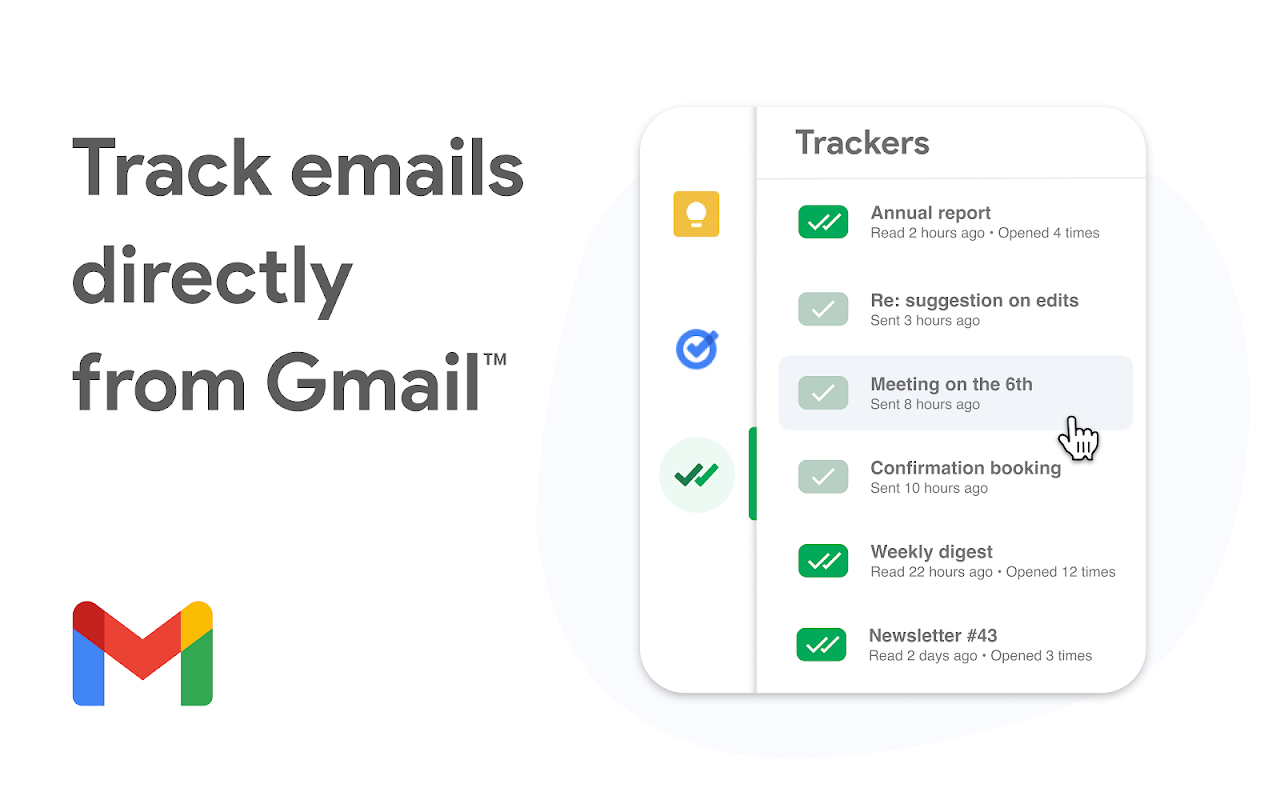Mail Tracker for Gmail
Track your emails and know when they are opened.
Mail tracker for mobile & desktop
Listing updated:December 9, 2025
Works with:
666K+




Overview
➤ More details on https://mailtrack.email ➤ This add-on was developed by Qualtir.com ⚫️ FEATURES ✔︎ Free and Unlimited email tracking: track as many emails as you like. ✔︎ Works on iOS & Android: send tracked emails directly from Gmail's app. ✔︎ No sign-up required. ⚫️ QUICK TUTORIAL 1️⃣ Install MailTrack for Gmail™ on the Workspace Marketplace 2️⃣ Insert a tracker in your email directly from Gmail™, using the button in the email composer window. (Also available on mobile) 3️⃣ Open your add-on to track your emails 4️⃣ Click on a tracked email to see how many times it has been opened. ⚫️ PRICING MailTrack for Gmail™ is completely free. ⚫️ GMAIL TRACK BENEFITS - Add a read receipt in Gmail™ - Higher open rates and response rates than any other email tracker - Reach the Inbox: your emails are less likely to end up in promotions or spam, unlike other mailtrack - Best deliverability ever for a tracked email - Easy follow-up with alerts ⚫️ OUR USERS ARE 👩💻 Large companies & small businesses, entrepreneurs, or indie hackers in need of an inbound & outbound email campaign tool to contact prospects and potential new clients. 👩🏫 Teachers, universities (and more broadly education) who want to send courses and/or exam grades to their students (at school, university, and college) at the end of the week, month, or semester. 👩⚕️ Associations, NGOs & clubs in order to receive new applications, promote a contest, a call for projects, interact with their crew, send communicate with their database of members. 🧑💼 Businesses and professionals of all kinds looking to send a payment reminder to a list of clients based on the unpaid status of their invoices. 🤵 And also startups, digital marketing agencies, consultancy groups... ⚫️ WHEN TO USE A MAIL TRACKER FOR GMAIL - Job search: know whether your resume has been opened by the recruiter or not. - Sending Quotes: know if your your potential clients are engaged. - Invoices: know wether your bill has been received or not. - Newsletters: send up to 200 individually tracked emails by once with Gmail™ templates. - Mail marketing: measure your cold emails effectiveness with our mail trackers
Additional information
sell
PricingFree of charge with paid features
code
Developer
Non-trader
email
Support
lock
Privacy policy
description
Terms of service
flag
ReportFlag as inappropriate
Search
Clear search
Close search
Google apps
Main menu


